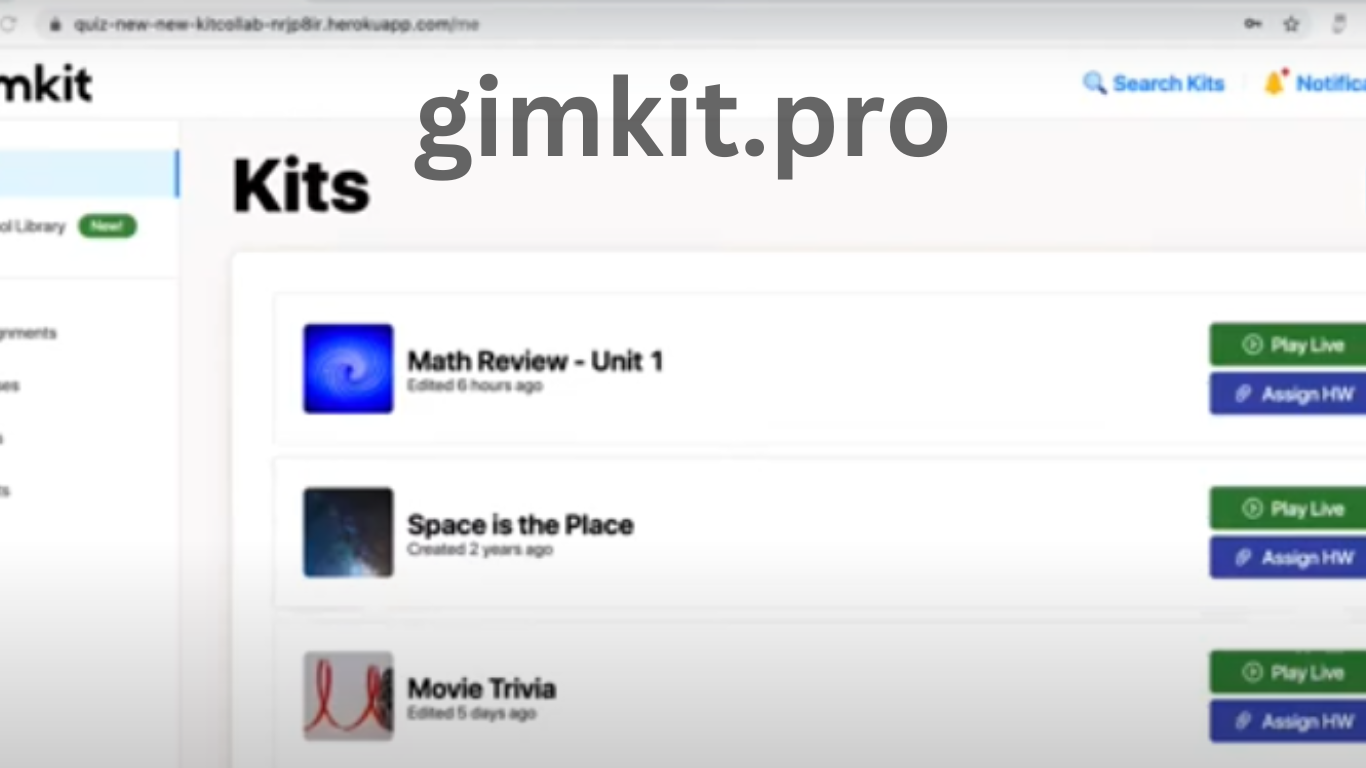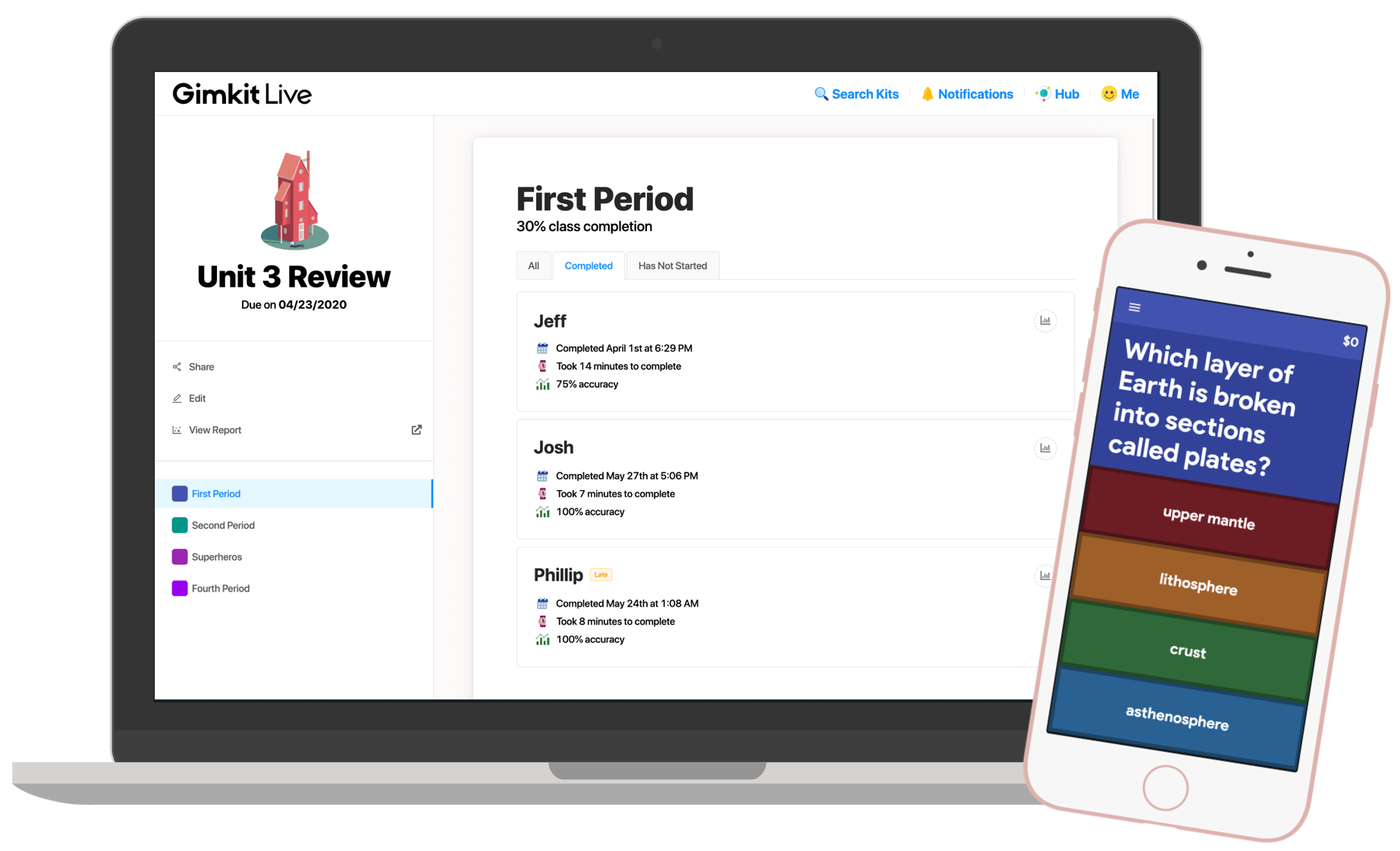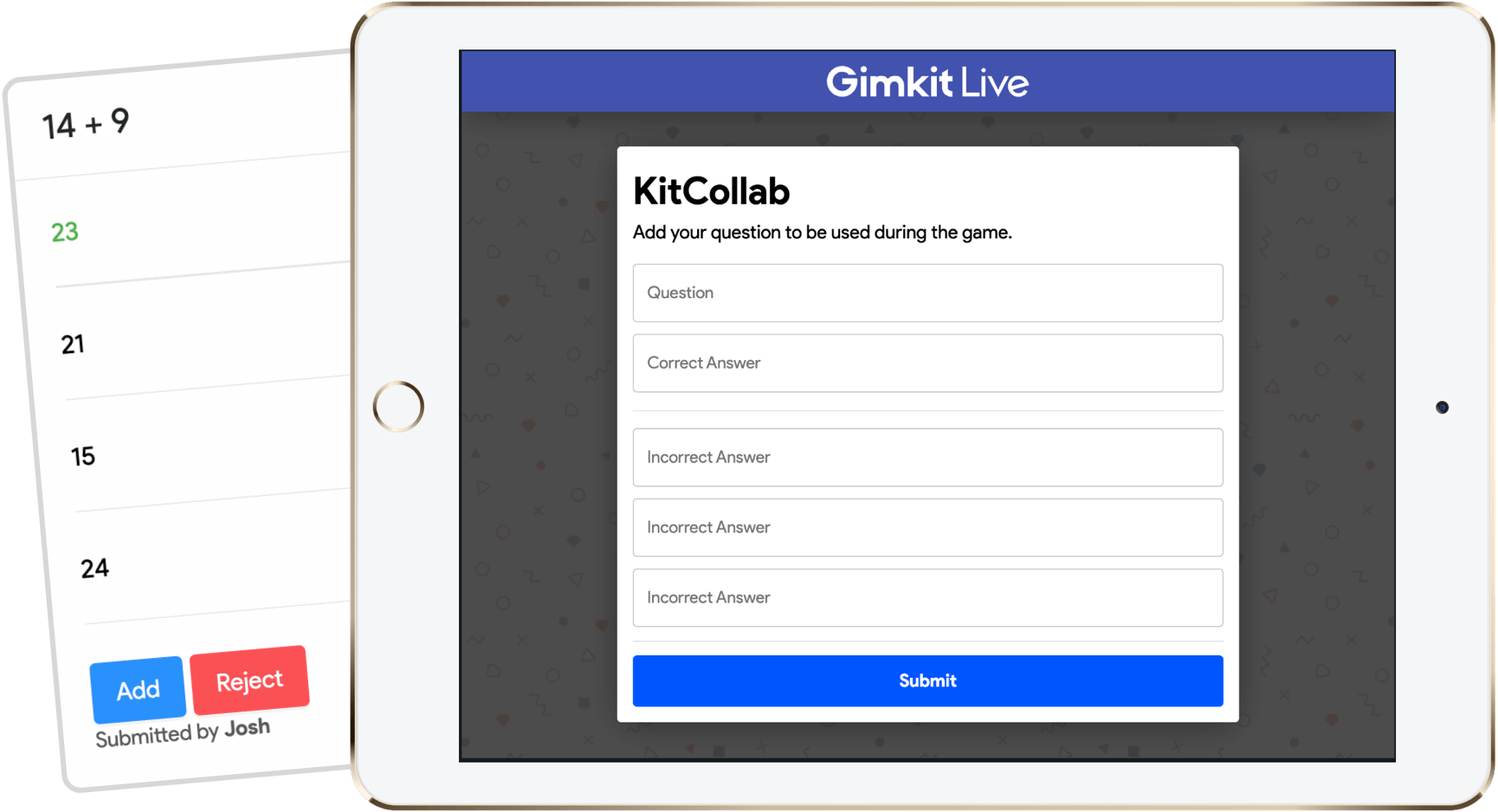When you get together to play games, especially something like Gimkit, there's often one person who takes charge, the one who gets everything ready for everyone else to join in. That person, you know, is the host. They are the one who makes sure the game starts, that everyone can play, and that the experience feels just right for the group. This little guide is here to help you, the person setting things up, get a good grasp of what it takes to be that host, especially when you are making your own creative maps and games in Gimkit. It’s about making sure your friends have a really good time, you see.
It's pretty interesting, actually, how much goes into making a game flow smoothly for everyone involved. Sometimes, when you are the one putting a game together, you want to make some decisions about how it all kicks off. Maybe you want to choose if there’s a little quiz right at the start, or perhaps you have some special options you’d like to offer up. This whole idea of being the host means you get to call some of those shots, which is a bit like being the director of your own fun experience. It’s about giving you the tools to make your game exactly how you imagine it.
This information is for anyone who wants to get a little bit of an advantage, or perhaps just a deeper feel for how things work when you’re playing a Gimkit Creative game. It touches on different aspects of setting up your own maps and worlds, and how you, as the host, can make certain things happen. Whether you’re just starting out or you’ve been building for a while, there are always little things you can learn to make your hosting experience, and your friends’ playing experience, even better. It really helps to know what you can do.
Table of Contents
- Getting Ready to Play Gimkit
- What Does it Mean to Host Gimkit?
- Setting Up Your Gimkit Game
- Making Choices as the Host Gimkit
- Where Can You Host Gimkit From?
- Is Hosting Gimkit Different for New Players?
- Solving Common Snags When You Host Gimkit
- Advanced Moves for Your Host Gimkit Game
What Does it Mean to Host Gimkit?
When we talk about being the host, it's pretty much like being the person who welcomes others and makes sure they have a good time. Think of it like inviting friends over for a party; you’re the one who opens the door, shows them where everything is, and makes sure the snacks are out. In the context of Gimkit, being the host means you are the one who gets the game going. You are the central point, the one who makes the decisions that get the play session started for everyone else. It’s a very important job, actually, because without a host, the game just wouldn't kick off.
The word "host" itself has a few different meanings, you know. Sometimes it's about a person who has guests over, whether it's for a meal or just to hang out. It can also mean someone who introduces people on a television or radio show, kind of like a master of ceremonies. In a more technical sense, like with computers, a host computer is the main one in a group of connected machines; it holds the really important files and programs that the others might need. So, when you host Gimkit, you are, in a way, being that central point, providing the space and the starting signal for all the other players to come and join in on the fun.
It's not just about starting the game, though. Being the host for Gimkit also means you are the one who controls some of the core elements, especially when you are using Gimkit Creative. For instance, the game's initial setup, like whether a specific camera view activates for players, often depends on what the host’s game client does. The host's machine, so to speak, is the one that sends out the first signals to get things moving. This means you have a certain level of influence over how the game begins and, in some respects, how it feels for everyone else right from the very first moment.
Setting Up Your Gimkit Game
Getting your Gimkit game ready to go involves a few steps, especially if you are using the creative tools to build your own map. You might have your map all set up, and you’re just about ready to let your friends try it out. The process of getting your game host ready usually goes pretty smoothly. You put things in place, you make your selections, and then, you know, it should just work. It’s like setting up a board game; you lay out the pieces, shuffle the cards, and then you’re ready to play.
However, sometimes, even when things mostly work, you might run into a little snag. You could find that you want to set up your game host in a slightly different spot than where it naturally lands. This could be about where the game officially "starts" from a technical perspective, or perhaps where certain initial game elements are triggered. It’s a bit like wanting to move the starting line of a race to a new location. If you have questions about changing that specific spot for your host Gimkit setup, there are always ways to figure it out, perhaps by asking others in the community who have tried similar things.
The host room, for instance, has a step two that's part of getting things just right. This is where you might make some choices about the options available. These are the "developer options," which include things like setting the difficulty level for your game. It’s about fine-tuning the experience before anyone even jumps in. So, you get to decide if your game is going to be super challenging or a bit more relaxed, and these choices are part of getting your host Gimkit environment exactly how you want it to be for your players.
Making Choices as the Host Gimkit
One of the really cool things about being the host is getting to make some key decisions about how the game unfolds. For example, right at the very beginning of a game, you, as the host, might get to choose if there's going to be a questioning system in place. This means you can decide if players will face a set of questions before the main action begins. It's a way to set the tone, perhaps to review some material or just to add an extra layer of engagement from the get-go. This guide helps you figure out how to put that choice right there for the host to pick.
In some games, especially ones you design yourself, like a role-playing game (RPG) in Gimkit Creative, you might have different ways to figure out a player's score. Let's say, for instance, your score is usually calculated by multiplying achievements by the coins a player has gathered. As the host, you might want to be able to offer other ways to tally up the score. Maybe you have four different options for how scores are figured out, like achievements times coins, or perhaps just coins, or just achievements, or some other combination. It’s pretty useful, actually, to have that kind of flexibility when you host Gimkit.
So, you see, the host isn't just someone who presses a "start" button. They have the ability to shape the early moments of the game and even influence how success is measured within it. This control allows for a much more personalized and, you know, perhaps a more interesting experience for everyone playing. It really makes the host feel like they are truly in charge of the game's direction, even before it fully gets going.
Where Can You Host Gimkit From?
When you're thinking about hosting a game, a common question that comes up, especially for those new to Gimkit, is whether you can host a game live or if you can assign it as homework. This is a very practical question, as it changes how and when people can play your game. If you've just made a kit and published your game through Gimkit Creative, you might be wondering about these options. It’s about figuring out the best way to share your creation with others, you know.
Basically, once you, the host, trigger the game to start, it becomes like a central point for that game session. It's almost like a relay station that passes along the initial signals. Then, everyone else who joins the game, apart from you, becomes a spectator, or a participant who is just receiving the game information from your host connection. This means your setup is key to getting everyone else involved. It’s pretty much the core of how the game communicates its beginning to everyone else.
The game start lifecycles, which are the processes that kick off the game, only activate on the host's client. This means that if you have something like "gamestart1" set up to activate a camera point, it will only do so for you, the host. The other players might not see that specific camera point activate right away. To fix something like this, you might need to use a "relay." A relay is a tool that helps pass that activation signal from the host to all the other players, ensuring everyone experiences the game's start in the same way. It’s a very handy thing to know about when you host Gimkit.
Is Hosting Gimkit Different for New Players?
If you're new to Gimkit and have just created a kit and published your game using Gimkit Creative, you might have a few questions about how to make it available to others. It’s a natural thing to wonder about, you know, when you’re just starting out. You've put in the effort to build something, and now you want to share it. The good news is that the basic process of hosting is pretty straightforward, whether you're a seasoned player or just getting your feet wet.
For beginners, there are usually specific guides that can help you understand the very basics of how Gimkit Creative works. If you're looking for that kind of introductory information, you can often find a page specifically designed to redirect you to those simpler explanations. It’s a good place to start, actually, to get a solid foundation before you move on to more involved aspects of hosting. It makes sure you have all the fundamental pieces in place.
And if you need a little bit of help building your own maps and worlds in Gimkit Creative, there are resources available for that too. The community often puts together guides to help new creators. These resources are designed to walk you through the steps, making sure you don't feel lost when you're trying to bring your ideas to life. So, whether it's understanding the basics of how to host Gimkit or getting assistance with your map design, there's support out there to help you get going.
Solving Common Snags When You Host Gimkit
Even with the best intentions, sometimes things don't go exactly as planned when you're setting up a game. You might encounter a few common issues, especially if you're trying out some more unique game designs. For example, I've seen many "don't look down" maps in Gimkit Creative, which are pretty fun, but there's often one mistake that pops up. It could be that a "summit" or a key part of the game starts right away, perhaps a bit too quickly, or it might be something else entirely that just feels a little off. It’s about spotting those little things that can make the experience less smooth.
One particular snag, as mentioned before, happens when a game start signal, like "gamestart1," activates a camera point only for the host. This is because the game start lifecycles, which are the internal processes that trigger events at the beginning of the game, only really kick off on the host’s computer or device. So, the other players don't see that camera change. To fix this, you need to bring in a "relay." A relay is basically a device within Gimkit Creative that takes that signal from the host and passes it along to everyone else in the game. It ensures that all players get the same starting experience, which is pretty important for fair play.
These little fixes are part of what makes building and hosting your own games so rewarding. It’s about troubleshooting and making sure that the experience you’ve created is shared equally and smoothly with everyone who plays. So, if you run into something that doesn't quite work as expected when you host Gimkit, chances are there's a simple solution, perhaps involving a relay or another clever use of the creative tools. It just takes a little bit of knowing how things connect.
Advanced Moves for Your Host Gimkit Game
Once you get comfortable with the basics of hosting, you might want to try some more advanced techniques to give your game a special touch. This guide, in a way, is meant for any Gimkit player who wants to gain an edge or just understand the deeper workings of their creative game. It covers how to make certain things happen that go beyond the typical setup. It’s about getting more control over the subtle elements of your game, you know, to make it truly stand out.
For those who really want to get into the details, there's something called the "advanced handbook for Gimkit Creative." This is a resource that goes into much more depth about how the creative tools work. It’s not just for beginners; it’s for people who want to understand the inner workings and perhaps push the boundaries of what they can build. If you're looking to really fine-tune your game and implement more complex features as the host, this kind of handbook can be a very valuable thing to look at.
It's all about making your game truly unique and ensuring that you, as the host, have all the choices and controls you want. Whether it's setting up specific questioning systems at the start, making sure all players see the same camera views, or offering different scoring options, these advanced insights help you achieve that. It gives you the ability to create a truly customized and engaging experience for your friends, which is, you know, what being a great host is all about.
Related Resources:



Detail Author:
- Name : Ms. Amie Moen
- Username : okon.bert
- Email : macejkovic.margot@hotmail.com
- Birthdate : 2003-09-25
- Address : 6986 Kelly Brooks Suite 077 Port Kareem, VA 19440-1905
- Phone : 757.990.5746
- Company : Conn, Gleichner and Parisian
- Job : Product Management Leader
- Bio : Eius impedit enim corrupti totam nemo cupiditate non. Porro rerum ex ut et tempora. Voluptates iste ut consequuntur quaerat. Ratione sequi eius et libero et voluptatem perspiciatis.
Socials
instagram:
- url : https://instagram.com/gerald8694
- username : gerald8694
- bio : Dolorem magni eos et nemo. Vel non fugiat exercitationem aspernatur optio voluptatum velit.
- followers : 1131
- following : 2314
twitter:
- url : https://twitter.com/gwuckert
- username : gwuckert
- bio : Qui ipsa qui vitae eum qui. Facere dolore ut vitae ut et. Sequi quos officiis sint error impedit mollitia quis.
- followers : 965
- following : 395
linkedin:
- url : https://linkedin.com/in/gerald_xx
- username : gerald_xx
- bio : Repellat ea delectus molestiae culpa voluptate.
- followers : 6188
- following : 1789